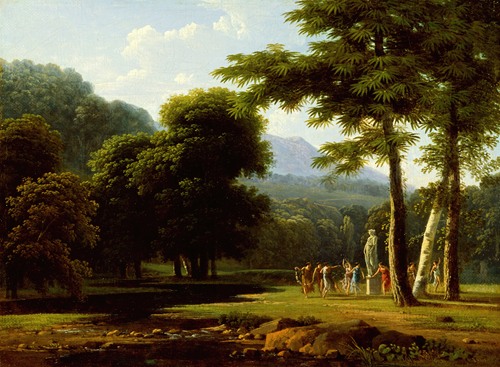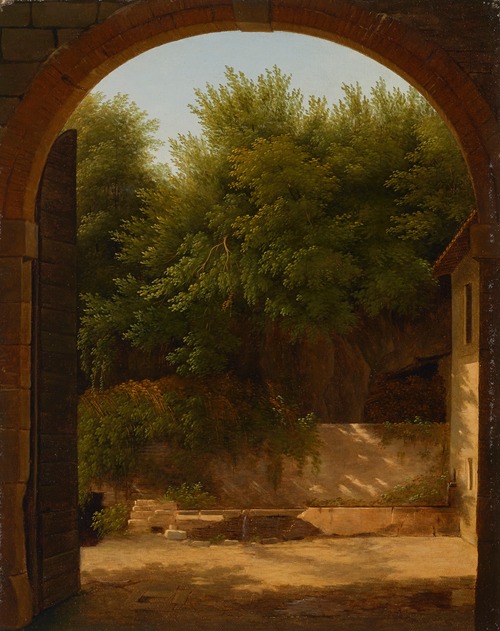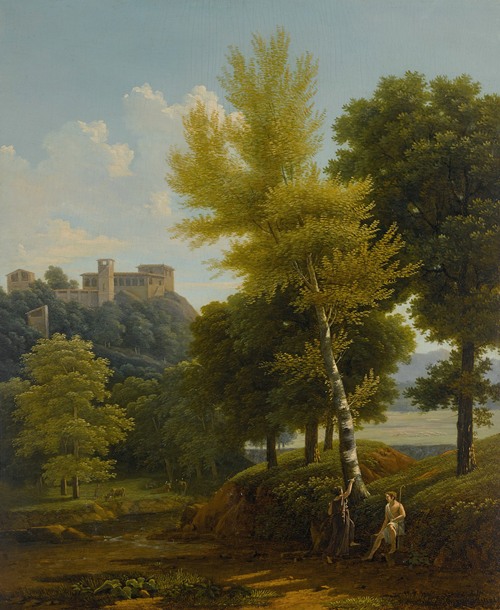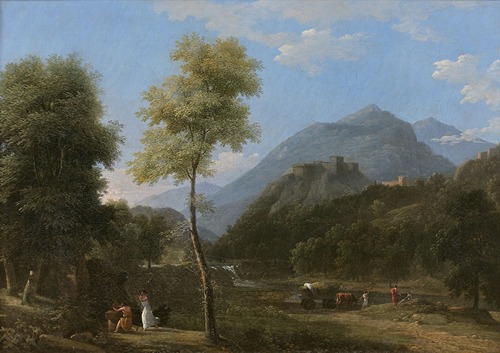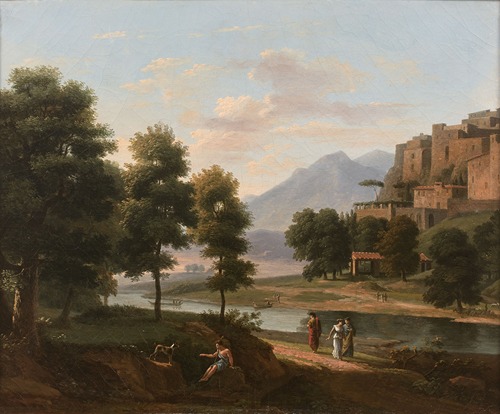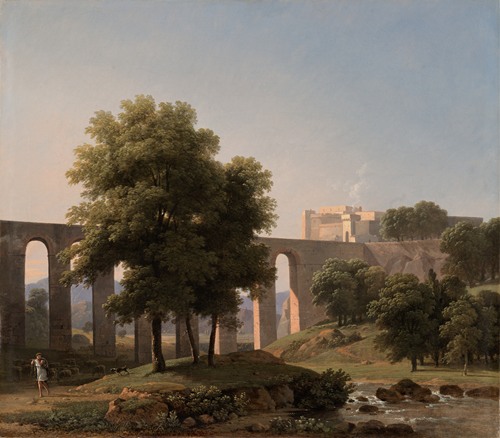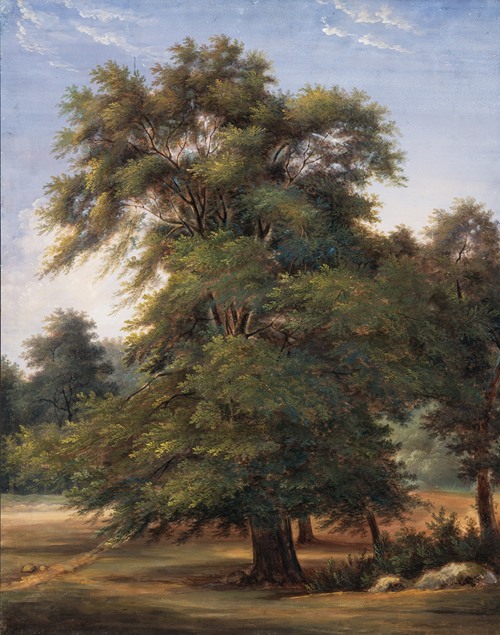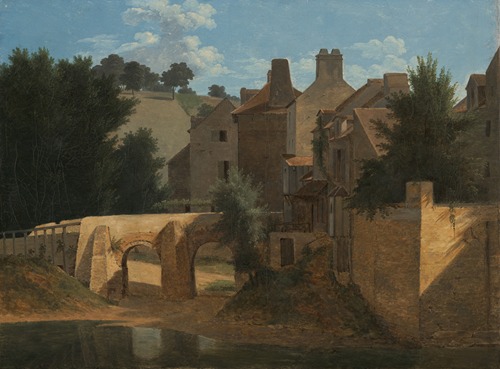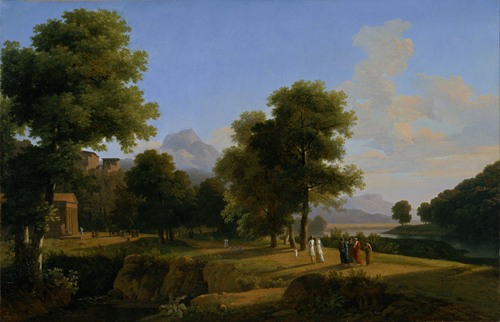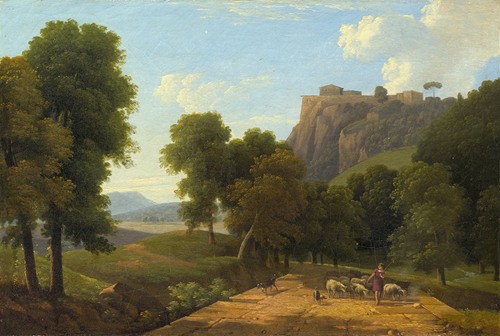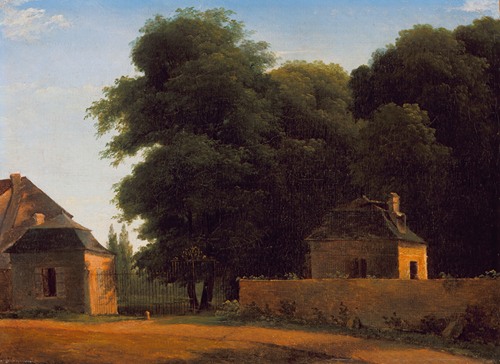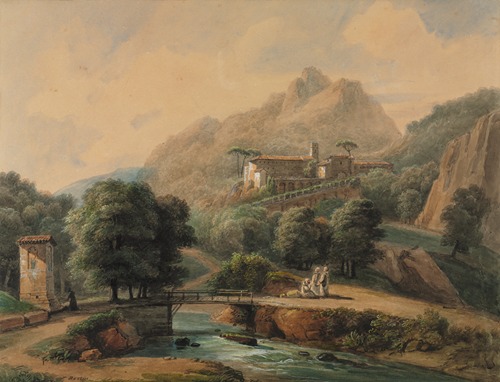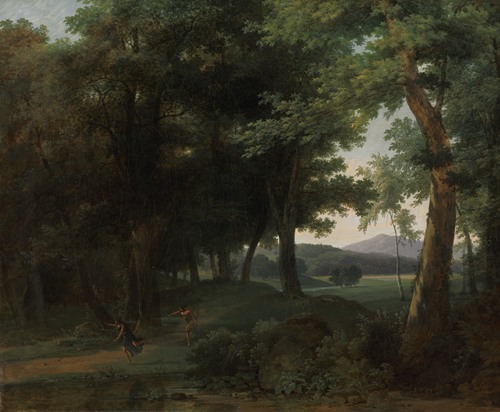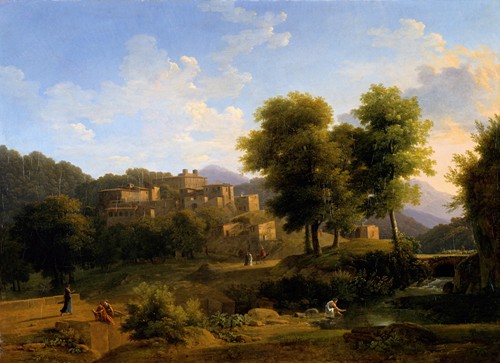
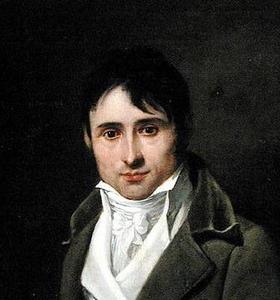
Jean-Victor Bertin was a French painter of historical landscapes, inspired by Italy and known for the minute detail of his classical style.
The son of a master wig-maker, he became a pupil of the celebrated Valenciennes. He entered the Académie royale de peinture et de sculpture in 1785, as a pupil of Gabriel-François Doyen. Between 1785 and 1793 he participated in several 'concours d'émulation' competitions and from 1793 until his death regularly exhibited at the Paris Salon. He won a 'prix d'encouragement' in 1799 and his work was recognised in 1808 by a gold medal, first class, with a value of 250 francs. He was granted the Légion d'honneur on 21 August 1822 and his old age was marked by financial problems, and he left his widow in deep material distress.
He was himself the master of Michallon, Coignet, Boisselier, Corot, Enfantin, and others. Several of his works were commissioned for the palais du Trianon and the palais de Fontainebleau between 1811 and 1817. Prestigious amateurs such as the duc de Berry and the banker Jacques Laffitte appreciated Bertin's talents and from 1833 onwards the French state, particularly the Interior Ministry, regularly bought his works to enrich museums in the provinces.
